Sandwood Bay, Sutherland, Scotland and what we found on the beach in May 2008.
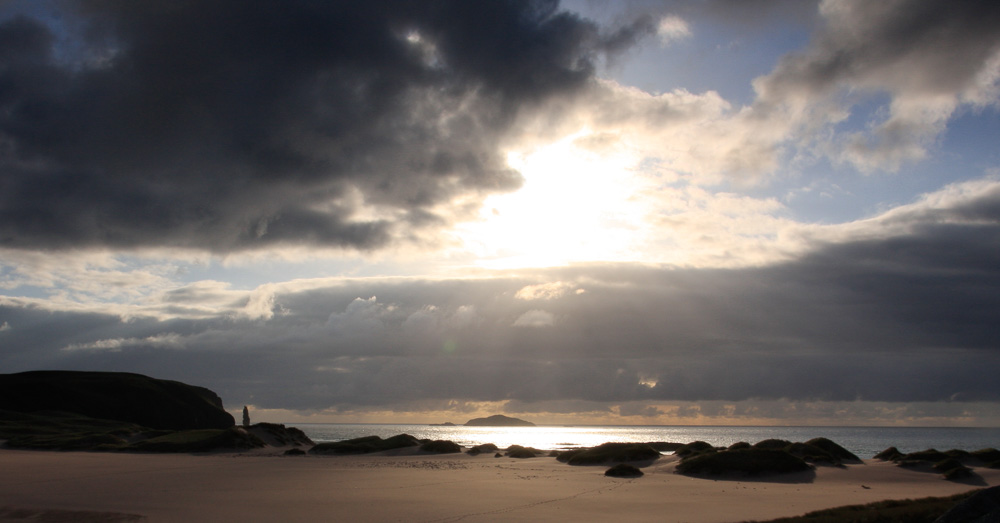
Sandwood Bay is in the far North-West of Scotland, about 5 miles south of the most North-Westerly point in Great Britain at Cape Wrath. There is no road access but is an easy 4-mile walk from a small car park in the crofting hamlet of Blairmore.
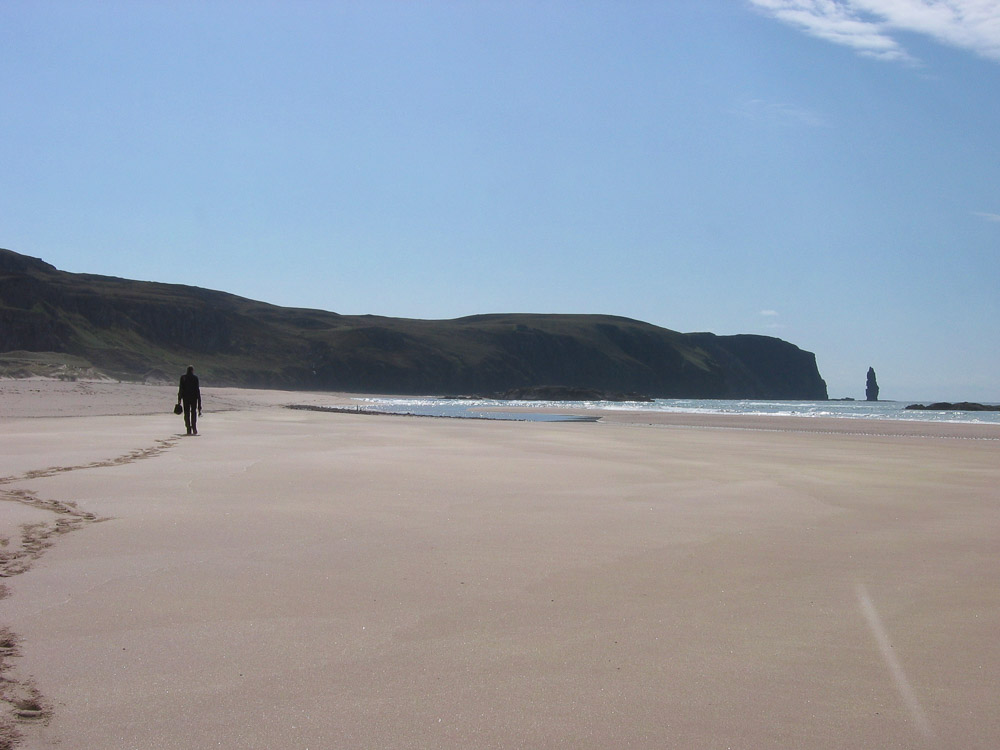
I went there after a hillwalking trip in the Cairngorms to take some scenic shots of the remote, 1.6 Km long beach and Am Buachaille (the Shepherd, a sea stack at the southern end of the beach). In the picture above you may be able to see something sticking up out of the sand in a patch of shingle just this side of the breakwater (ok, I can barely see it myself now and I know where it is). I was heading towards it to check it out.
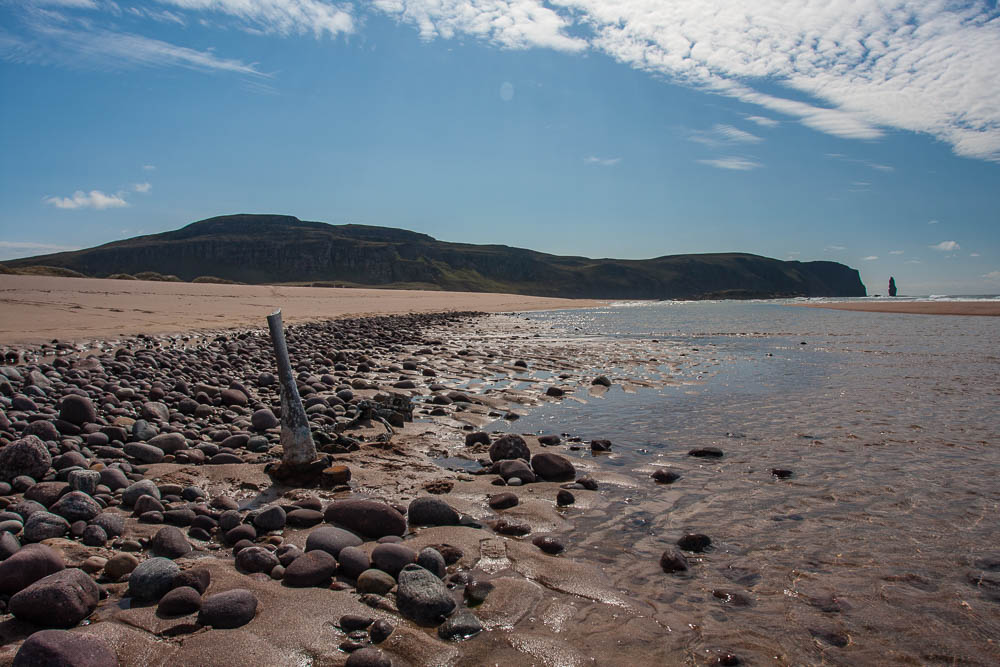
The “thing” turned out to be a propeller. Not just any propeller; a Spitfire propeller from a Mk 1 Supermarine Spitfire R7154. Obviously, I didn’t know this at the time; whilst there are people who can identify an upturned Merlin Mk3 crankcase at 100m, I am not one of them.
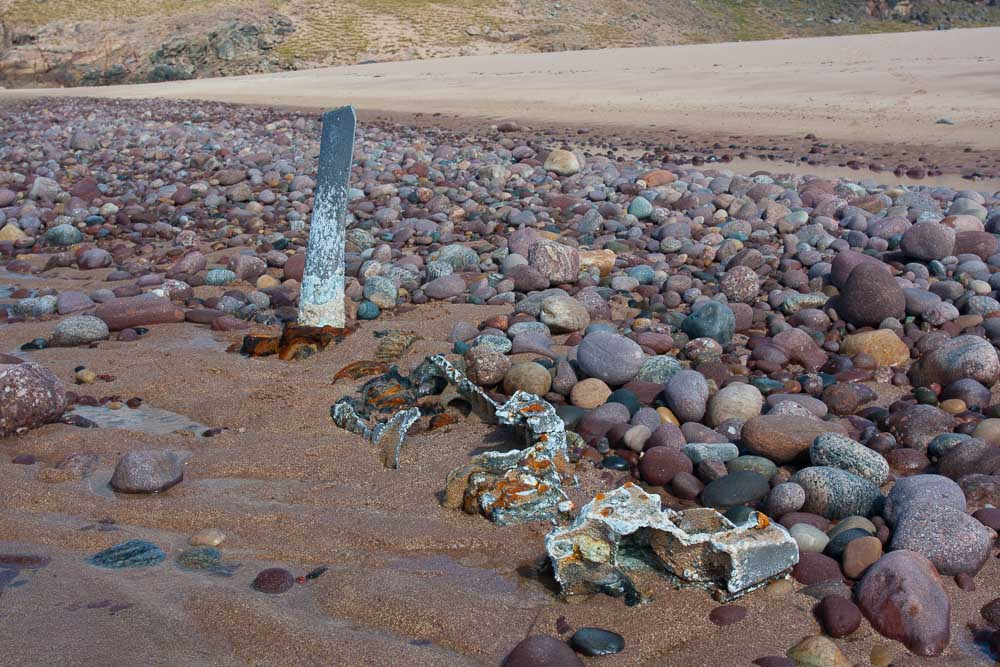
Some research on the internet on my return home revealed that Sgt Michael Kilburn was on patrol over Scapa Flow on 30th September 1941 when his Spitfire’s engine failed resulting in him landing it on the beach. This must have been quite a feat and luckily for him that the tide was out. The incident was witnessed by a local shepherd who took the pilot (unhurt) to his cottage to await recovery. The aircraft was not recovered other than for removal of the ordnance. I am sure that I also read somewhere that the pilot insisted that his seat was recovered but I cannot find any reference to that now and I may be confusing it with another incident.
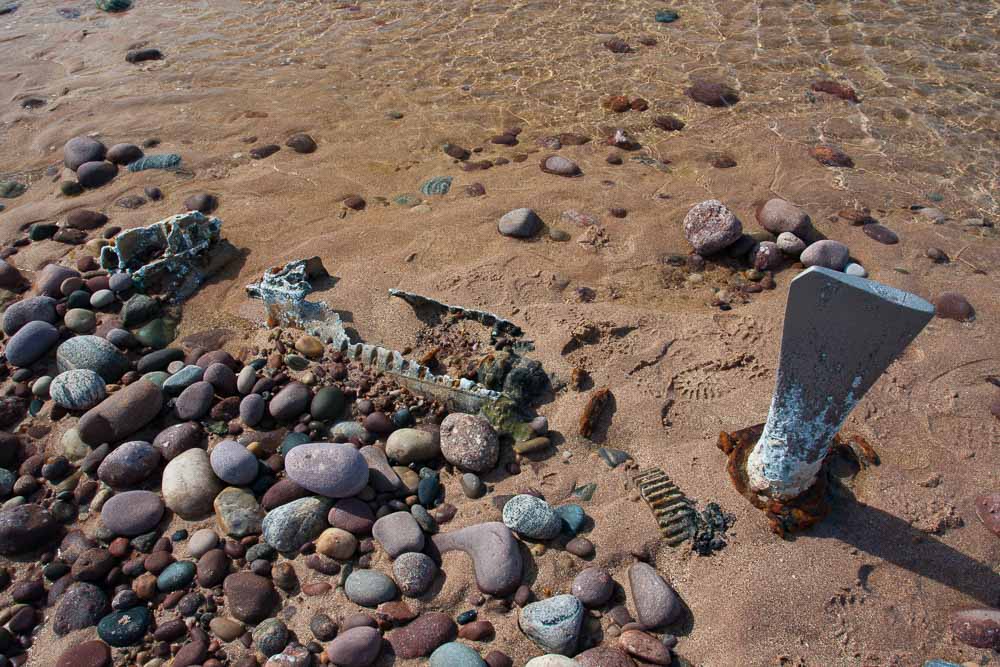
The aircraft was a “presentation” aircraft and was paid for by the people of Accrington, Church and Oswaldtwistle, Lancashire. It first flew on 26th February 1941 and was passed to 124 Squadron on 7th May 1941 via 12 Maintenance Unit. It cost £6000 which was raised by a donation from the people of those towns. Sgt Kilburn survived the war and went on to become a test pilot in early jets. There are some later sightings of the remains from 2015 here.
The find was all the more remarkable because my wife’s family are from Church and her parents and grandparents may well have contributed to the original purchase.
I have found out from interest generated by these pictures being on the internet, that the engine is upside down and we are looking at the sump through which we can see the crankshaft. The reduction gear and the prop has sheared off the crankcase. However, I have never understood why the end of the propellor is the shape it is. Is that how it was designed or has the end been cut off by a souvenir hunter as was suggested by one correspondent? I don’t think the latter is true as the end is too neat and tidy but in all the pictures of Spitfires I have seen I have never seen a propellor shaped quite like this one.
For a wider look around the Bay, please see my other post on Sandwood Bay.